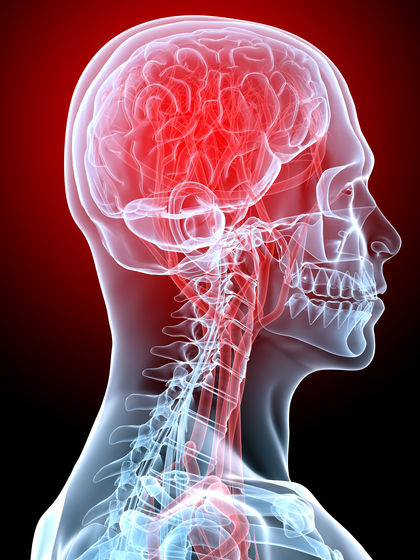Ask someone who receives regular chiropractic care about their experiences. The typical response is that they do not get sick as often and feel better. They are also likely to tell you that certain illnesses, aches and pains have a tendency to improve without the use of drugs or medical intervention. If chiropractic care simply moves bones and reduces inflammation, you are probably wondering how it is possible for people who receive regular chiropractic care to feel so good.

The reason behind chiropractic patients feeling healthier dates back nearly 100 years to the year 1921. In 1921, a medical doctor, Henry Winsor set out to understand if there was a correlation between areas of the spine having misalignments and organ malfunction. Dr. Winsor posed the following question:
“Chiropractors claim that by adjusting one vertebra [bone of the spine], they can relieve stomach troubles and ulcers; by adjusting another, menstrual cramps; and by adjusting other parts of the spine conditions such as kidney disease, constipation, heart disease, thyroid conditions, and lung disease may resolve –but how?”
Upon medical school graduation, Dr. Winsor found himself to be inspired by chiropractic and osteopathic literature and began to experiment with these concepts. His plan was to dissect human and animal cadavers. This was in an effort to see if there was, in fact, a relationship between any diseased organs and the vertebrae associated with nerves that traveled to these specific organs.
Dr. Winsor indicated, “The object of these necropsies [dissections] was to determine whether any connection existed between curvatures of the spine (vertebra misalignments), and diseased organs; or whether the two were entirely independent of each other.”
Understanding Your Nervous System:
Understanding how your nervous system works is key to understanding the work of Dr. Winsor. Your nervous system is divided into a number of different parts; including:
1. The Central Nervous System (CNS). Your CNS is comprised of the brain and spinal cord, which are responsible for connecting with the rest of your body.
2. The Peripheral Nervous System (PNS). Your PNS includes all of the nerves that are responsible for sending messages to and from your CNS. Your peripheral nervous system is responsible for conscious (like moving your fingers) and unconscious (your heart beating) movements.
3. The Autonomic Nervous System (ANS). Your ANS is the portion of your peripheral nervous system that regulates unconscious movements.
4. Your ANS is comprised of two separate systems: the sympathetic nervous system and the parasympathetic nervous system. The sympathetic nervous system tends to speed functions of the body up, while the parasympathetic nervous system has a tendency to slow processes of the body down.
If one or more of your vertebrae are misaligned, this inflammation can affect the functioning of your nervous system.
There is a Link Between Spinal Irritation and Disease
Dr. Winsor carried out his research at the University of Pennsylvania, where he conducted a series of three studies. During his research, Dr. Winsor dissected 75 human and 22 cat cadavers.
Dr. Winsor found:
“221 structures other than the spine were found diseased. Of these, 212 were observed to belong to the same sympathetic (nerve) segments as the vertebrae in curvature. In other words, there was nearly a 100% correlation between minor curvatures of the spine and diseases of the internal organs.”
| Heart Disease: All 20 cases with heart and pericardium conditions had the upper five thoracic vertebrae misaligned (T1-T5). | Pancreas: All 3 cases with pancreas disease had spinal misalignments in the mid-thoracic area (T5-T9). |
| Lung Disease: All 26 cases of lung disease had spinal misalignments in the upper thoracic area (T1-T5). | Spleen: All 11 cases with spleen disease had spinal misalignments in the mid-thoracic area (T5-T9). |
| Stomach Disease: All 9 cases of stomach disease had spinal misalignments in the mid-thoracic (T5-T9) area. | Kidney: All 17 cases with kidney disease were out of alignment in the lower thoracic area (T10-T12). |
| Liver Disease: All 13 cases of liver disease had misalignments in the mid-thoracic area (T5-T9). | Prostate and Bladder Disease: All 8 cases with prostate disease had the lumbar vertebrae misaligned (L1-L5). |
| Gallbladder: All 5 cases of gallstone disease had spinal misalignments in the mid-thoracic area (T5-T9). | Uterus: 2 cases with uterine conditions had the second lumbar (L2) misaligned. |
Dr. Winsor’s results are published in The Medical Times and are found in medical libraries across the country. Winsor was not the only one to have such findings. Similar studies by other researchers have confirmed Dr. Winsor’s conclusion that degenerated and misaligned spines have a high correlation with disease processes.
Regular Chiropractic Patients are Healthier






